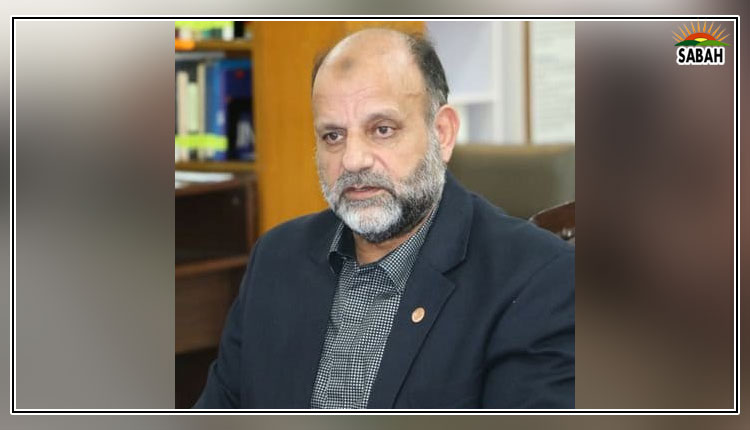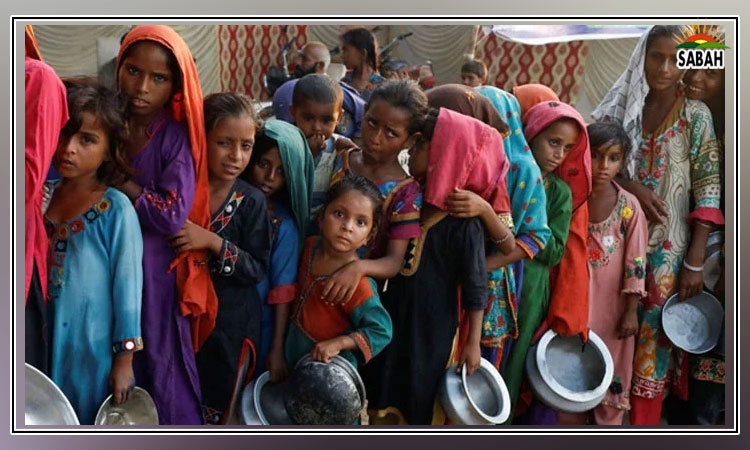The malnutrition crisis…Mehnaz Akbar Aziz
Malnutrition remains one of the deadliest barriers in equity to the holistic development of all Pakistani children. The challenge is huge for Pakistan as it is facing a global acute malnutrition (GAM) rate of 17.7 per cent, exceeding the emergency threshold.
Four of ten children under five years of age are stunted, while 17.7 per cent suffer from wasting. The burden of malnutrition is becoming increasingly apparent, with almost one in three children underweight (28.9 per cent), says a Unicef report. Summing up, approximately 30 per cent of children are underweight, 44 per cent are stunted, and 49 per cent of women are moderately anemic.
With a population of 235.8 million (2022), Pakistan ranks number five in the list of countries, by population. The countrys ranking in the Global Hunger Index (GHI 2023) is 99th out of 126 countries. Approximately 8.6 million people (24 per cent) are faced with acute food insecurity. A World Bank article indicates that 32 districts in Balochistan, 20 in Sindh and 17 in Khyber Pakhtunkhwa and the newly merged districts are notified as calamity hit with nearly 48 per cent stunting in under-five children.
The malnutrition epidemic is a vicious cycle that starts with the anaemic mothers womb and intensifies in the lactation period and manifests in the first thousand days, starting from conception to the second birthday. The early years of life are key to neural development, which includes formation of new Neurons, Synapses, and Sensory development such as vision, hearing, touch, taste and smell. Furthermore, brain region development is also connected to the early years.
Political leadership and policymakers have also failed to make the connection between childrens neglected nutrition and dismal school enrollments. This is one of the reasons that Pakistan has 26.2 million out-of-school children, the worlds second highest number of children that are out of school. The population of out-of-school children is a result of learning poverty, influenced by inadequate food and nutrition. We are aware of the learning poverty amongst students (through CERP and ASER reports). Impaired cognitive functions, decreased motivation and delayed development all contribute to increased dropout rates.
The recent rise in inflation to 24.76 per cent has made wholesome meals impossible for 40 per cent of the population. According to the National Nutrition Survey compiled by the Ministry of Health Sciences and Unicef in 2018, there are statistics to prove intergenerational undernourishment in women and mothers, impacting children and eventually adolescents and causing direct impacts on human capital and labour market outcomes.
According to a World Bank article in 2023, with each cohort of stunted children newborns, a $7.6 billion burden is added to the economy. Although the federal government has announced a Task Force on Education and declared an emergency and a Task Force on Polio, unfortunately malnutrition is not a political priority nor is it prioritized in the national budget. In recent years, international aid and UN partners only have supported and focused on nutritional provisions for children and lactating mothers.
From the governments side, a focused effort was launched by the Planning Commission in collaboration with the National Nutritional Forum a three year multisectoral nutrition programme was announced in 2023, with an allocation of R8.50 billion. The deputy chairman at that time had recommended a dashboard to monitor progress. The active SUN alliance is to be the implementing partner.
The Benazir Income Support Program has a component of nashonuma on improved weight gain in expectant mothers and stunting prevention in children. It is a conditional cash transfer programme and implemented in 158 districts with a network of 512 Nashonuma centers and mobile sites. The outreach numbers are impressive 645800 pregnant women and 630000 children.
Recently the US ambassador to Pakistan announced the delivery of 486 tons of specialized nutritious foods to treat more than 29000 severely undernourished children in Pakistan. USAID has been an active partner in financing and supporting partners, such as the WHO and Unicef. It is worth mentioning that the US role in supporting women and children in emergencies and urgent humanitarian needs has remained exemplary, especially in the 2022 floods.
With USAID funding, Unicef supported flood-affected communities in Balochistan and Sindh, through antenatal care. It provided support to nearly 74,000 pregnant women and primary healthcare services to more than 10,000 children of age five and younger. One has to acknowledge the US support for Basic Health Units like the one in Khairpur; a front-line facility that helped respond to Pakistans acute malnutrition emergency and improved lives and health outcomes in flood affected districts across Sindh. Such units provide ready-to-use therapeutic food, nutrition counseling, screening, and treatment to improve the health of children under five years old and women who are pregnant or breastfeeding.
In 2023, Unicef has been active with financial support from USAID in treating up to 85000 acute undernourished children and with the World Food Program is treating children and lactating mothers with moderate acute malnutrition. In the past decade, USAIDs focus and commitment to supporting Pakistan in combating malnutrition is remarkable as an agency that supports the bodies of the UN such as Unicef, WFP and WHO. The National Nutrition Forum, SUN platform, local NGOs and USAID, Unicef, WFP, WHO, and World Bank have been in the front lines to respond to the severity of malnutrition.
The ball remains in the governments court to announce a malnutrition emergency and have a database and dashboard available for the most vulnerable areas. It needs to adopt a strategy and a national plan that is backed by solid cooperation with the provinces. The government should establish a web of local and International partners, to provide long-term sustainable relief.
As our country grapples with multiple economic challenges and a huge population with abject poverty, it is clear that the responsibility of the state is to make sure that each child born in Pakistan attains his/her full potential. It is also the responsibility of parliament, media, the private sector and each one of us to hold the state accountable on the most pressing issue of malnutrition.
The writer is a former member of the National Assembly of Pakistan. She tweets/posts @MehnazAkberAzi
Courtesy The News












